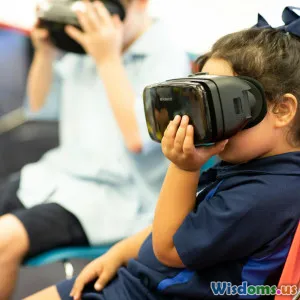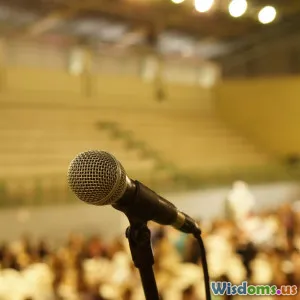
Is Eye Contact Really Necessary While Presenting
8 min read Explore the true impact of eye contact in presentations and discover when and why it matters for effective communication. (0 Reviews)
Is Eye Contact Really Necessary While Presenting?
When standing before an audience—whether in a corporate boardroom, classroom, or conference hall—a seemingly simple act often weighs heavily: making eye contact. Many public speaking guides insist that establishing eye contact with listeners is crucial to delivering an impactful presentation. But is eye contact truly necessary, or is it a performance cliché? Could focusing too rigidly on eye contact backfire? This article delves into the nuances of eye contact during presentations by examining psychological foundations, empirical research, cultural considerations, and practical strategies. The goal is to empower presenters to use eye contact thoughtfully and authentically rather than dogmatically.
The Power of Eye Contact: Beyond a Social Cue
Eye contact is one of the most fundamental nonverbal communication behaviors humans use to connect. It triggers complex psychological and neurological responses, affecting how people perceive sincerity, confidence, and attention.
Psychological Foundations
When a speaker meets an audience member's gaze, it can create a momentary interpersonal connection. Psychologist Michael Argyle’s studies show that eye contact can increase rapport and perceived trustworthiness. Moreover, research from neuroscientists reveals that mutual gaze activates the brain’s social cognition networks, helping listeners feel engaged and understood.
Impact on Listener Engagement
A study published in the Journal of Personality and Social Psychology found that speakers who maintained eye contact elicited higher levels of audience attention and interest. Listeners reported feeling more motivated and satisfied with presentations where the speaker's gaze was steady but natural.
For example, TED Talk speakers often use eye contact purposefully to build intimacy despite large audiences, proving its effectiveness even in high-pressure, public situations.
The Common Advantages of Eye Contact in Presentations
Creates Connection and Builds Credibility
Consistent eye contact signals confidence and transparency, traits that convince an audience you believe in your message. When people feel "seen," they're psychologically more inclined to trust the presenter.
Increases Audience Engagement and Feedback
Eye contact enables speakers to read audience cues and adjust delivery dynamically—spotting confusion, boredom, or enthusiasm. It turns a monologue into an interactive experience.
Reduces Presenter Anxiety
Although ironically terrifying for novices, sustained eye contact reduces perceived interpersonal distance, often decreasing speaker nervousness after initial moments.
When Eye Contact Might Be Overrated or Counterproductive
Cultural Nuances and Context Variations
In some cultures—such as parts of East Asia or the Middle East—direct eye contact may be perceived as disrespectful or confrontational, especially toward authority figures. For example, in Japan, a respectful bow often replaces sustained eye contact.
If you present internationally, customary norms regarding eye contact should be researched and adapted per audience.
Large or Virtual Audiences
Attempting to make exclusive, direct eye contact in rooms with hundreds or thousands isn’t feasible. Instead, focusing gaze "around" the crowd—looking at different zones—or using the camera lens online creates inclusivity without forced eye locking.
Eye Contact Anxiety and Special Needs
Individuals with social anxiety disorder or certain neurodivergent conditions, like autism spectrum disorder, may find eye contact exhausting or triggering. Forcing such presenters to meet eyes artificially can undermine authenticity and performance.
Practical Guidelines for Using Eye Contact Effectively
1. Adopt the 3-5 Second Rule
Rather than darting eyes rapidly, maintaining gaze with individuals for about 3-5 seconds cultivates connection while minimizing awkwardness. Shift naturally across audience members to include everyone.
2. Scan the Entire Room
Divide your audience mentally into segments and rotate gaze to avoid fixation or exclusion. This creates an illusion of personalized engagement for a large group.
3. Combine Eye Contact with Gestures and Facial Expressions
Eye contact alone is insufficient if your body language contradicts it. Authentic smiles, nods, and open posture paired with gaze make messages feel sincere and captivating.
4. Prepare for Virtual Presentations
Looking into the camera lens, rather than at notes or the screen, simulates eye contact, aiding perceived personal connection in webinars or remote meetings.
5. Reflect Your Style and Audience Needs
If locked eye contact challenges your speaking style or your audience's culture, opt for subtler gaze behaviors combined with other engagement tools like movement, vocal variety, and storytelling.
Real-World Insights from Seasoned Speakers
Simon Sinek, author and motivational speaker, emphasizes the risk of trying to "fake" eye contact: "People can tell when your eye contact is forced—it’s uncomfortable and distracting." Sinek recommends focusing on authentic presence instead.
Meanwhile, Nancy Duarte, a presentation design expert, references studies demonstrating that skilled speakers use eye contact exceeding 60% of the time to command attention and credibility.
Conclusion: Eye Contact Is a Valuable Tool, Not a Rigid Rule
Eye contact plays a significant role in creating meaningful connections during presentations by fostering engagement, trust, and feedback. However, it is neither obligatory nor universally appropriate in all contexts. When used thoughtfully—respecting cultural diversity and individual comfort—it enhances the impact of spoken messages.
Ultimately, eye contact should serve your authentic communication style rather than restrict it. Effective presenters blend eye contact with storytelling, vocal variety, and genuine expressions to captivate audiences. Embrace eye contact as one vital instrument in a larger communication toolbox.
Whether you are a novice aiming to overcome gaze anxiety or a seasoned pro seeking nuanced connection, understanding the why and when of eye contact will transform your presence on stage for lasting impact.
Ready to elevate your presentation skills? Start by observing your own eye contact patterns and experimenting with mindful pauses and audience scanning at your next talk. The connection begins with your gaze.
Rate the Post
User Reviews
Popular Posts


















